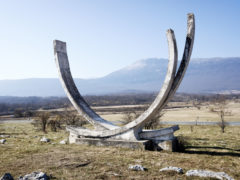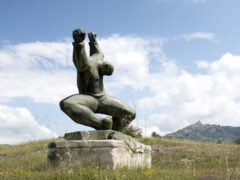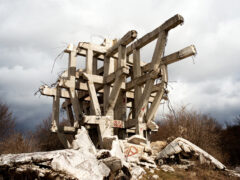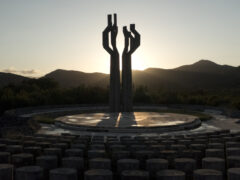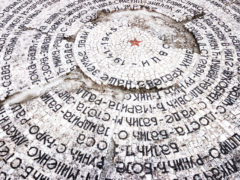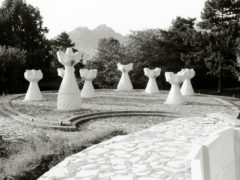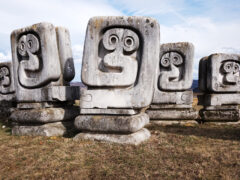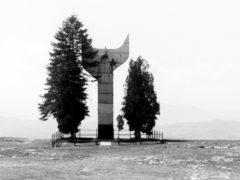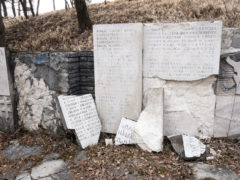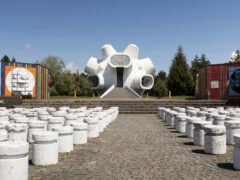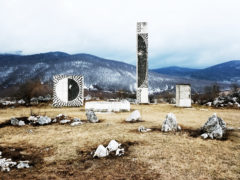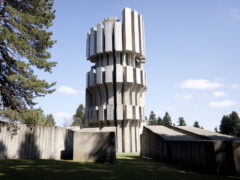»Spomenik« | Partisanen Denkmäler [ work in progress ]
„In diesem Gebeinshaus der Unsterblichen verglimmt Tapferkeit, sie ist eingewebt in unsere heutige Freiheit“ – die es gegen erneut stark aufkommende nationalistische und faschistische Bestrebungen zu bewahren gilt.
Ossuary Memorial-Kosturnica / Mausoleum, Veles, Nordmazedonien
Ab Mitte der 50er Jahre wurden im multiethnischen Staat Jugoslawien unter Marschall Tito Wettbewerbe zur Errichtung futuristischer Skulpturen und Bauwerken zur Ehrung der Partisanen und des Widerstands der Zivilbevölkerung im Freiheitskampf gegen Faschismus und Nationalismus im 2. Weltkrieg ausgeschrieben. Im modernen Design und abstrakter Architektur der 60er bis 80er Jahre entstanden die Monumente, oft mit einbezogenen Grabstätten, in meist abgelegenen Wäldern, Bergen oder Plateaus. Sie wurden an den Orten gebaut, an denen die Kämpfe und der Widerstand geleistet wurde.
Heute sind viele dem Zerfall preisgegeben oder wurden mutwillig zerstört. Besonders trifft es die Partisanen Denkmäler in deren Umgebung sich wieder verstärkt nationalistische Gedanken und Kräfte seit den 90er Jahren ausbreiten. In ihrem Geist einer multiethnischen Gesellschaft passen sie nicht ins Blickfeld.
In welchem Zustand das jeweilige Partisanen Denkmal ( Spomenik ) auch immer ist, hält es die Bedeutung, Ursprung und Symbolik bei. Es steht für den erfolgreichen Widerstand gegen ausgrenzende und zerstörerische nationalistische Gedanken, für eine offene und tolerante Gesellschaft. Für Idealismus und Zusammenhalt, die Essenz der gemeinsamen europäischen Idee.
